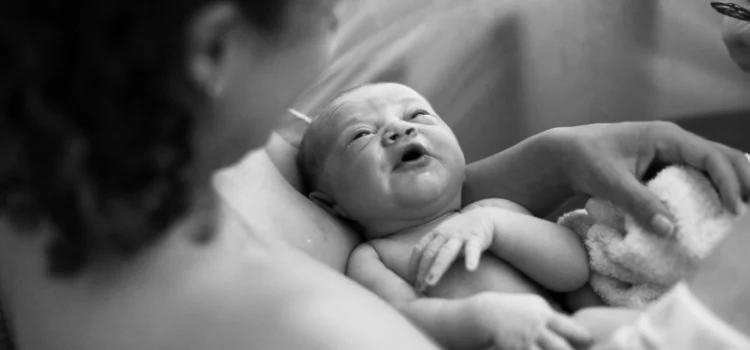Recurrent Late Decelerations
During pregnancy, your doctor will monitor your baby’s heart rate for abnormalities. One such abnormality is recurrent late decelerations, which occur when the fetal heart rate swiftly decreases due to a lack of placental blood flow. Recurrent late decelerations can have negative long-term consequences, especially if the medical team doesn’t promptly treat them. Birth Injury Center explains recurrent late decelerations, including symptoms and treatment options.

Home > Pregnancy Complications > Recurrent Late Decelerations
- Last Updated Date: March 24, 2025
A baby’s heart rate can alert medical providers to complications during pregnancy and delivery. Doctors typically use electronic fetal heart monitoring to check for signs of potential distress. Fetal heart monitoring can detect abnormalities, such as severe, unexpected drops in a baby’s heart rate. If heart rate abnormalities continue, the doctor may diagnose recurrent late decelerations.
Recurrent late decelerations indicate problems with placental blood flow and oxygen supply. Left untreated, they can cause infant brain damage, including hypoxic-ischemic encephalopathy and cerebral palsy. Birth Injury Center answers common questions concerning recurrent late decelerations, including diagnosis and treatment options.
What Are Recurrent Late Decelerations?
During labor and delivery, your medical team will use an electronic fetal monitoring system to evaluate your contractions and your baby’s heart rate. The electronic fetal monitoring system can detect changes in the heart rate that are cause for concern, such as fetal decelerations. Fetal decelerations are apparent gradual decreases in the fetal heart rate.
Fetal decelerations fall into three categories: early, late, and variable. Each category has a specific pattern and timing:
- Early decelerations: These are characterized by a drop in the baby’s heart rate coinciding with the mother’s uterine contractions. Once the contraction ends, the baby’s heart rate recovers.
- Late decelerations: The baby’s heart rate falls after the mother’s uterine contractions.
- Variable decelerations: These are sharp decreases in fetal heart rate that don’t coincide with the mother’s uterine contractions. The decrease in fetal heart rate lasts for at least 15 seconds before returning to normal.
Decelerations in your baby’s heart rate become recurrent if they occur in more than 50 percent of your uterine contractions over a 20-minute period.
What Is the Difference Between Early and Late Decelerations?
Before the onset of labor, your medical providers will begin using an electronic fetal monitoring system to assess your baby’s heartbeat. The system can detect abnormalities that indicate fetal distress, allowing doctors to take quick action if necessary.
Early decelerations begin at the start of the mother’s uterine contractions, and the baby’s lowest heart rate occurs at the contraction’s peak. Typically, the baby’s heart rate begins to fall at the onset of the contraction before rising again as the contraction ends. Early decelerations are quite common. They usually aren’t a concern since they don’t impact a baby’s oxygen levels, as the early deceleration is not a placental perfusion related deceleration. Many babies experience early decelerations as the uterus size decreases and they enter the birth canal. Compression on the fetal head is the most direct cause of early decelerations visualized on the fetal heart rate tracing monitor.
Late decelerations are different. They don’t directly align with the mother’s contractions. Instead, the deceleration starts after the mother’s uterine contraction ends, not at its peak. A late deceleration can mean the baby is experiencing a lack of oxygen or decreased blood flow to the placenta.
Are Recurrent Late Decelerations Concerning?
A late deceleration is very concerning, especially if it is recurrent. Your doctor will evaluate when the deceleration begins and ends and whether it coincides with maternal contractions. If late decelerations occur with more than 50 percent of your contractions over 20 minutes, they become recurrent and a sign of fetal distress.
Medical providers evaluate the severity of late decelerations based on whether other decelerations are present, including variable and early. If early and variable decels are not present, signs of impaired blood flow to the placenta, which reduces the amount of oxygen and nutrients available to the baby, is indicated. A lack of other decelerations indicates impaired blood flow to the placenta, which reduces the amount of oxygen and nutrients available to the baby. The doctor must take swift action to prevent fetal hypoxia and a buildup of acid in the baby’s blood, known as metabolic acidosis.
If recurrent late decelerations occur alongside early and variable decelerations, it indicates there is no fetal acidemia. However, your doctor will continue to monitor the baby’s heart rate to determine if further action is necessary.
What Are the Causes of Recurrent Late Decelerations?
The most common cause of recurrent late decelerations is contractions during labor and delivery. Contractions put pressure on the uterine walls, restricting blood flow to the placenta. Decreased blood flow to the placenta causes a reduced amount of blood and oxygen to the fetus.
However, there are a few other conditions that can lead to recurrent late decelerations, including the following:
- Maternal anemia or dehydration
- Hypoxia
- Hypotension that arises from an epidural
- Placental abruption, reduced placental exchange between the placenta and fetus
- Other reduced placental exchanges such as in hypertensive disorders, diabetes, and IUGR
- Uterine tachsystole
Another potential cause of recurrent late decelerations is an overactive uterus. Overactivity of the uterus can occur as a reaction to uterotonics, such as oxytocin.
How Are Recurrent Late Decelerations Diagnosed?
Your medical providers will use fetal heart monitoring throughout your pregnancy to detect abnormalities in your baby’s heart rate. Every prenatal doctor visit should include an assessment of the baby’s heart rate, and the doctor will inquire about changes in fetal movements.
Ongoing monitoring can help identify fetal decelerations in their early stages, allowing doctors to take action that can reduce further complications. While an electronic fetal heart monitor is the most common diagnosis tool, they may also use a Doppler ultrasound probe or non-stress test to measure heart rate changes and potential concerns.
Once labor begins, medical providers will assess fetal heart rate at multiple intervals. If the doctor determines the baby is at low risk for decelerations, they’ll check fetal heart rate at least every 30 minutes during active labor and every 5 to 15 minutes during the second stage of labor. However, if the medical team believes the fetus is at high risk of deceleration, they’ll continuously monitor its heart rate throughout delivery.
How Are Recurrent Late Decelerations Managed?
Treatment for recurrent late decelerations depends on their cause and when they begin. The primary goal is redirecting blood flow to the placenta, increasing oxygen levels, and preventing further complications.
The first line of treatment is repositioning the mother on her left side, with her knees toward the chest. The position helps alleviate excess uterine pressure and increases placental blood flow. The medical team will continue to monitor the baby’s heart rate during repositioning to see if the late decelerations end.
Sometimes, other treatments are necessary depending on the cause of late decelerations. For instance, if an epidural, which has caused hypotension, results in late decelerations, administering intravenous fluids can ease the mother’s hypotension and increase blood flow to the placenta. Supplemental oxygen can also help ease fetal heart racing associated with late decelerations.
If the doctor believes uterotonic medication used to increase contractions during labor caused the late decelerations, they may discontinue administering it. Over time, the uterine muscles will relax, allowing blood flow to return to the placenta. The frequency of uterine contractions can also be decreased with a tocolytic, such as terbutaline. Tocolytics help improve uterine relaxation by decreasing the frequency of uterine contractions thereby improving placental perfusion to the fetus.
A cesarean or immediate vaginal delivery may be necessary if none of the treatments to stop recurrent late decelerations work, but this is a last resort and rare.
What Are the Complications of Recurrent Late Decelerations?
If recurrent late decelerations persist even after treatment, it may lead to short- and long-term complications for the baby.
In the short term, babies born after suffering recurrent late decelerations may have low APGAR scores. The APGAR scoring system considers a newborn’s muscle tone, heart rate, response, appearance, and breathing on a scale of zero to 10. Babies with a low APGAR score may need additional intervention, such as breathing assistance or intensive care.
Since recurrent late decelerations decrease the baby’s placental blood flow and oxygen supply, there is a risk they may experience mild to severe brain damage. As a result, they’re at risk for hypoxic-ischemic encephalopathy, or HIE, and cerebral palsy.
Next Steps: Seek Legal Assistance for Complications From Recurrent Late Decelerations
Most infants who experience recurrent late decelerations during childbirth won’t develop long-term conditions. With proper treatment from a competent medical team, they’ll recover fully from the experience. However, if your physician doesn’t take the appropriate actions, their negligence can be disastrous for your baby. The longer that recurrent late decelerations last, the more risk there is for future medical complications.
A baby that develops cerebral palsy, HIE, or other conditions due to recurrent late decelerations will need long-term medical care. The cost of their care can be significant, especially if you don’t qualify for support through Medicaid or other financial assistance programs. Pursuing a medical negligence lawsuit can help you obtain the money you need for your baby’s current and future medical costs, helping to maximize their quality of life and removing some of the financial burden from your shoulders.
Birth Injury Center can connect you with experienced birth injury attorneys who understand your situation. Contact us today to schedule a free case review and learn your legal options.
Written by:
Birth Injury Center Team
The Birth Injury Center aims to create informational web content and guides to help women and their families seeking support and guidance for birth injuries caused by medical negligence. All of the content published across The Birth Injury Center website has been thoroughly investigated and approved by medical expert Natalie Speer, RNC-OB, Attorney Ryan Mahoney.

